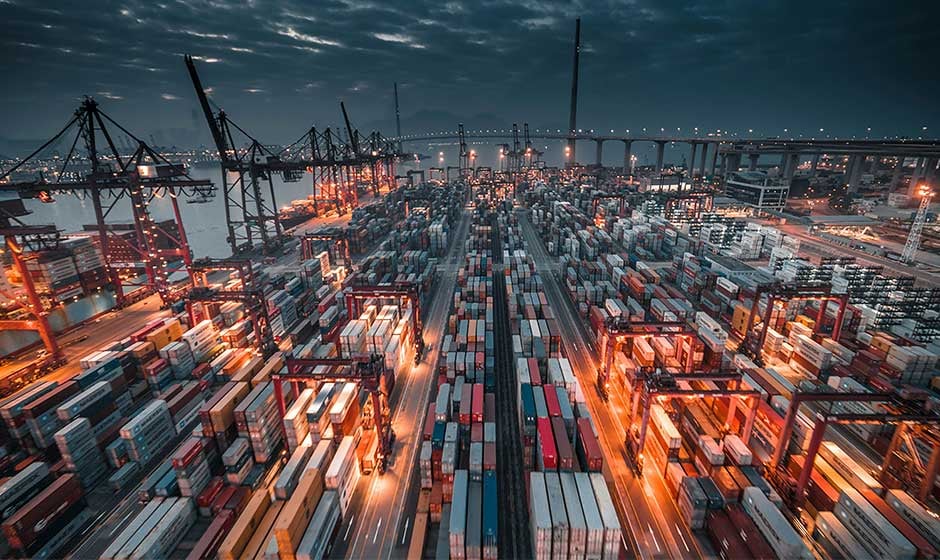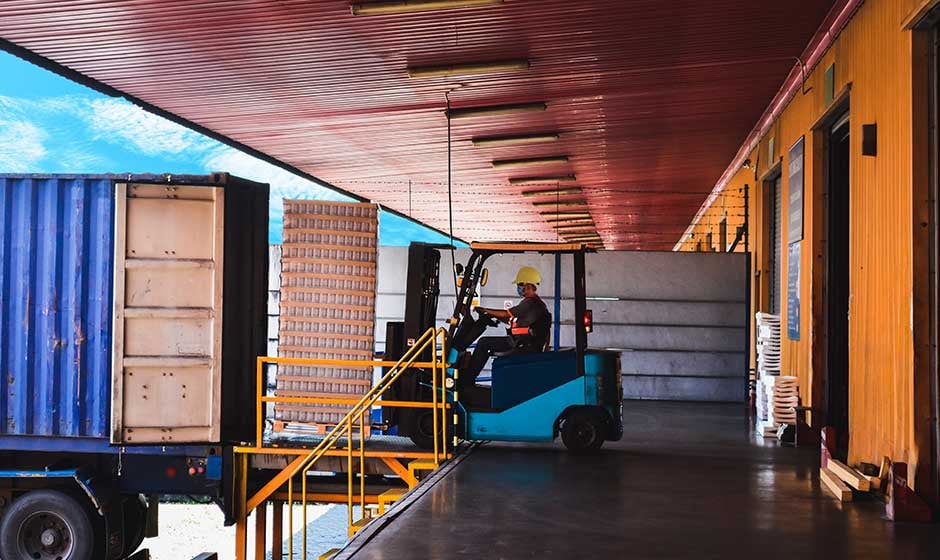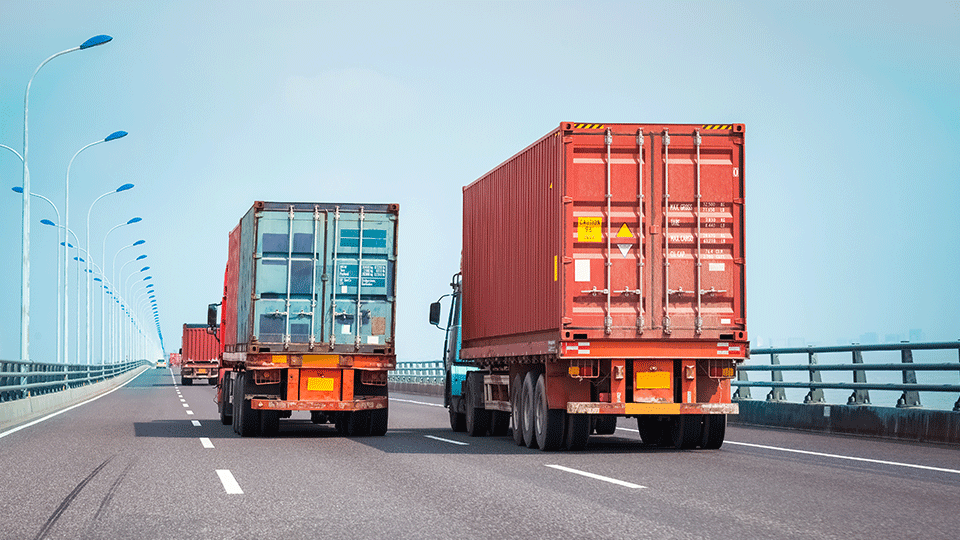 The deeper you look into the transportation world, the more complexity you’ll find. While no aspect of your job is easy, per se, overseeing your business’ transportation supply chain can be overwhelming.
The deeper you look into the transportation world, the more complexity you’ll find. While no aspect of your job is easy, per se, overseeing your business’ transportation supply chain can be overwhelming.
This is particularly true when arranging the collection and distribution of your containerized port freight. Not only do you need to ensure your cargo gets picked up at the port and delivered to its final destination(s) on time, but you also need to worry about container detention and demurrage charges.
Anderson Trucking Service (ATS) helps hundreds of customers, from across industries, arrange the transportation of freight to/from the world’s ports every year. We also offer third-party warehousing solutions in many areas.
Companies that receive container-bound inventories through a port typically have two options for handling the next segment of this cargo’s journey — from the port to its final destination(s):
- Transport the container to a warehouse, strip it and distribute it from there.
- Dray the container to its destination, unload it and bring the container back to the port.
While both of these tactics are effective, there’s a time and place for each. In this article, we’ll explain when it makes sense to do one over the other and give you some tips for making this decision.
Stripping a Container at a Warehouse: The Process Evaluated
Arranging transport of your container to a local warehouse for stripping (unloading) before transloading it onto a trailer for the remainder of its journey can make a lot of sense.
That said, arranging this process can be complicated. In its simplest form, you’ll need to find a drayage solution from the port to a nearby warehouse, arrange for someone to unload it (this may be warehouse staff or a third-party lumper crew) and arrange its collection from the warehouse.
Of course, like anything else, there are pros and cons to this method.
Advantage: Avoiding Container Detention
Perhaps the largest upside of approaching your cargo’s on-carriage journey this way is your ability to avoid charges like container demurrage. Detention is charged to businesses when the container they used isn’t returned to the port on time.
While exact timeframes vary, you should expect to have detention levied when a container isn’t returned within 2-5 days. These charges, which typically cost $50-$150 per day, can add up quickly.
Luckily, when properly arranged, you can have a full container picked up at a port, drayed to a warehouse, stripped of its contents and returned all in the same day.
 Advantage: Flexibility With Product Delivery
Advantage: Flexibility With Product Delivery
The second advantage of this method is that you don’t need to have the whole contents of a container delivered at once. Instead, you can arrange to have freight held at the warehouse before distribution. This gives you the flexibility to schedule its final transport and delivery in a way that aligns with your needs. If you need to send freight to multiple final locations or aren’t ready to receive it yet, you have some flexibility.
Disadvantage: Can Get Expensive
This strategy has more moving pieces than its alternative (to have the container drayed from the port to its receiver for unloading). Each of these moving pieces can cost money. These expenses include things like. . .
- Drayage from the port
- Lumper service at the warehouse
- Warehousing space for unloaded cargo
- Handling charges at the warehouse
- Transport from the warehouse to your receiver
Quite a few of these expenses can be avoided by having your freight transported directly to its destination from the port. Keep this in mind as you plan out your loads.
Draying a Container to Its Final Destination: The Process Evaluated
Having a drayage carrier pick up your container at a port and move it to your consignee/receiver for unloading is another option on the table. This is a very common method used by companies around the world, provided they have the resources on-site to efficiently unload inbound containers.
Advantage: Fewer Moving Pieces and Arrangements to Manage
Compared to the warehousing method, having a single transportation company pick up your cargo and dray it where it needs to go can be far more manageable. While a transportation provider (like a broker or freight forwarder) can help you make these arrangements, if you’re managing this on your own or want to prioritize simplicity, this is a better solution.
Advantage: More Cost-Effective
When things go smoothly from start to finish (at the port, during transport, during unloading), this method will be cheaper than getting a warehouse involved.
 Disadvantage: Not as Feasible For Hauls Longer Than 1,000 Miles
Disadvantage: Not as Feasible For Hauls Longer Than 1,000 Miles
This method isn’t usually suited for shipments that need to travel from the port to a destination greater than 1,000 miles away for a couple of reasons. First, 1,000 miles is a two-day trip each way for a truck driver; this will increase your on-carriage expenses substantially. Next, drayage carriers like to be as efficient as possible with their fleet and long-hauls like this aren’t as attractive to them. As such, the supply of carriers that will take on these loads is low, raising the price of securing one.
Finally, hauls of this distance make it harder to avoid equipment detention fees.
Disadvantage: Some Containers Will Require Special Accommodations
A second disadvantage of draying a full container an extended distance is this: Containers weighing 55,000+ pounds (driving the vehicle’s gross weight limit beyond 80,000 pounds) will need permits to be moved. As the distance these loads travel increases, the number of permits required will increase (particularly when moving across state lines).
Permits aren’t free, so this will add expense to your freight moves. Where the overweight container could be broken up into multiple shipments at a warehouse, you don’t have that ability with this method.
Additionally, having permits in play makes efficiency even more important; freight permits are issued for a specific date/period. If they expire, you will need to get new ones. Finally, if your container is overweight, a specialized chassis may be required to haul it, increasing the price of this service.
Which Method is Right For Your Business’ Containerized Port Freight?
Getting your freight to the U.S. in a container is difficult. That said, your budget and timelines can fall apart if you don’t take good care of it following its arrival.
Commonly, companies will have this cargo moved to a nearby warehouse for unloading and storage before being transloaded onto a new trailer for delivery. This is a great way to avoid extra port service charges like container detention and add some flexibility to your deliveries. However, employing this method increases the parties involved in your transport concept, and may be more expensive.
Alternatively, companies will dray the full container from the port to its destination and unload it there. This can save them the cost of lumper services and warehousing fees, but isn’t a great option for shipments of 1,000+ miles or those weighing 55,000 pounds+. In that case, you may be better off getting a warehouse involved.
In the end, many of these decisions could be made, or informed, by a good freight forwarder that specializes in moving containerized commodities internationally from A to B.
To help you choose yours, read The Pros and Cons of Working With a Freight Forwarder (+ How to Choose Yours).




